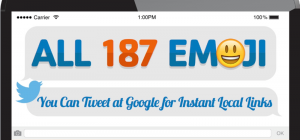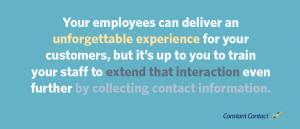Social media has overturned the traditional business-customer relationship, and with customers gaining more power than ever before their expectations for good service will keep on rising. But the public nature of channels such as Twitter and Facebook means margin for error is at a minimum. Therefore it’s imperative you get it right from the off.

That being said, there is a long list of Twitter fails by companies who have tried to engage with a disgruntled customer online (See US Airways for example).
So what should companies not do when dealing with a cross customer on social?
DO NOT: Remain Silent
As unhappy customers vent, the only thing that will aggravate them more is by being met with a wall of silence. The cardinal rule of social customer service, even if you can’t answer the question straight away, is to acknowledge the issue. Therefore, by not responding you break rule number one when it comes to social customer service.
No matter how well you prepare your social customer service team or how experienced they are, sometimes you just won’t know the answer. In these instances, the best thing to do is send out a holding post. A holding post lets your customer know you’ve acknowledged their issue, but also that you’re continuing to look into it. A holding post not only reassures the customer that they’re being listened to but also allows your team to meet their SLAs and improve first response times.
The customer simply wants to know you are working towards a resolution – so be honest, they’ll be much happier to wait if they have been acknowledged and not ignored.
DO NOT: Misuse your Words
Choosing your words wisely is critical on Twitter. You can spend months, even years, building up a respectable social media presence, but one badly-worded tweet can see that all crash down to the ground in seconds. For a customer service channel empathy is always of the utmost importance. A sincere, timely and public apology from your brand will not only show the affected customer you’re listening and there to help but will also show your wider community that recognise when things go wrong. Therefore, you should look to create approval workflows internally for your social channels. This will give the ability to approve a user’s actions (including responses) either entirely or as a percentage of all of their actions will mean your company can assess agents work before it goes live.
DO NOT: Shift the Blame
Companies must take full responsibility for the customer issue regardless of who it belongs to. The aim must be to resolve the issue without passing the customer from department to department. Your customers see you as the whole entity regardless to if its a marketing issue or an initiative corporate communications is dealing with. Therefore instead of making the customer work harder to resolve their complaint you need to have an internal process in place that routes the customer query to the right person. This will mean externally there is no impact to the customer journey!
DO NOT: Neglect Loyal Customers
Engagement on Twitter is key to the success of your brand’s social presence. Once you have a loyal community in place, they need to be nurtured. Your team should develop a two-way engagement activity that is not marketing or service based. Something that your community can get involved with and receive a reward for their efforts. Whether this be the simple follow, favourite, retweet or your team produce a brand-specific badge of honour. Simple ideas like this become something for your followers to strive for, a status symbol in their community. Engagement strategies like this can have zero cost implications for your brand, but can go a long way in building brand loyalty and as a consequence decreasing customer turnover.
By making sure you avoid doing these four things your social team can create a tone of voice that empowers agents, builds brand loyalty and forges relationships with your customer advocates.
For more tips on how to deliver social customer service as a standardized, scalable and ROI-positive operation, download our 2015 Definitive Guide to Social Customer Service.
(166)








